Table of Contents
If you want to begin your gardening journey, you must start it with the easiest and most suitable options that can help you gain confidence and make you proud of yourself with a few efforts.
Choose the plant that looks beautiful on your balcony, and then pour your heart into its growth. They do not just add beautiful green foliage to your house but also help to purify your air and boost its quality.
In this article, we are talking about beautiful and vibrant spider plants. As the name suggests, the spider plant is a beautiful green plant with yellow or white at its edges. The plant can be easily grown in a container or pot.
It has narrow and thin leaves that crawl out of the pot, making it look like a beautiful flower vase. The leaves spread out freely, giving it a bulky look and feel.
Let us know more about the growth and spider plant care in the UK in this article.
What is Spider Plant
The spider plant is one of the most elegant-looking plants that take a great place in your house, irrespective of your home decor, walls, colour, and other features. It goes stunningly well with wooden furniture and metallic accessories. It is one of the easiest-growing houseplants. This plant can grow in most weather conditions and goes through little issues, such as the browning of tips based on climatic conditions.
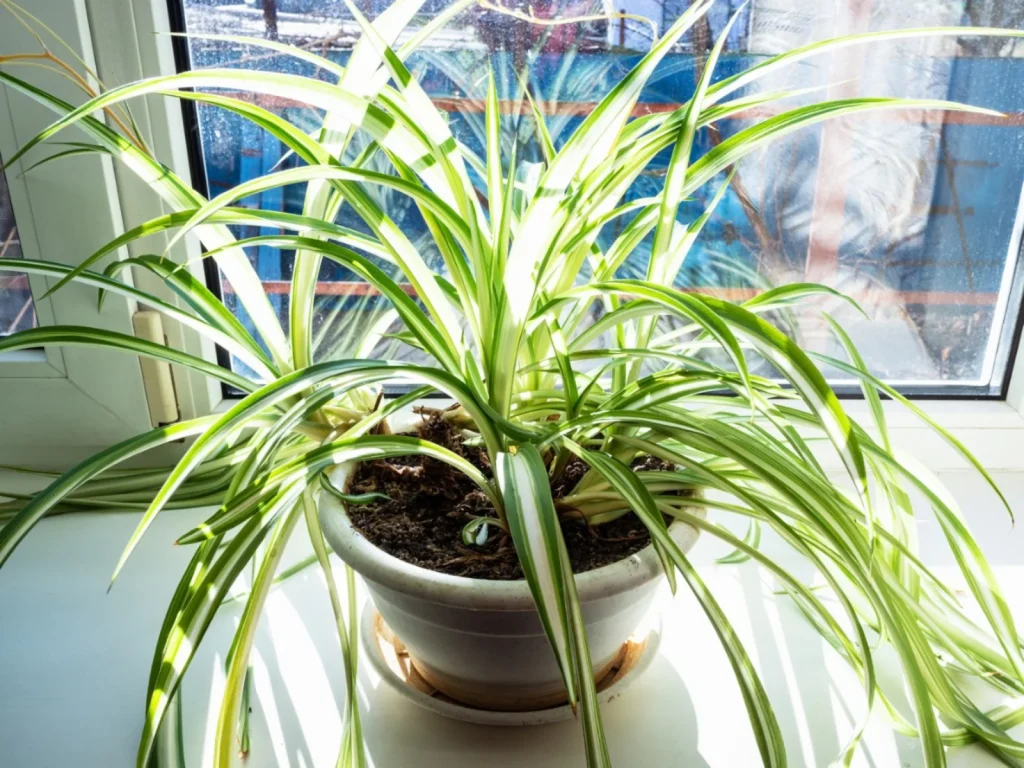
The leaves are narrow and take a curvy shape at the end. The leaves of spider plants grow up to 12 to 18 inches in length. The plant lives for a long time, even decades, in the best conditions. Several families pass the plant from generation to generation. The plant is easy to maintain and take care of even in difficult weather conditions.
In this article, you can understand the process of planting the spider plant and taking care of it such that it flourishes well in all weathers and conditions and continue to give warmth and greenery in your house for the whole year. So get ready to follow the simple steps and watch your plant blossom all year long.
How to Grow Spider Plant?
For a spider plant, the method of seed propagation is not widely used. You can just propagate them vegetatively by dividing their roots or even planting the offsets. However, you can experiment with the seed propagation method if you have a plant that is already grown well and is producing seeds. It might turn out fine if you are lucky.
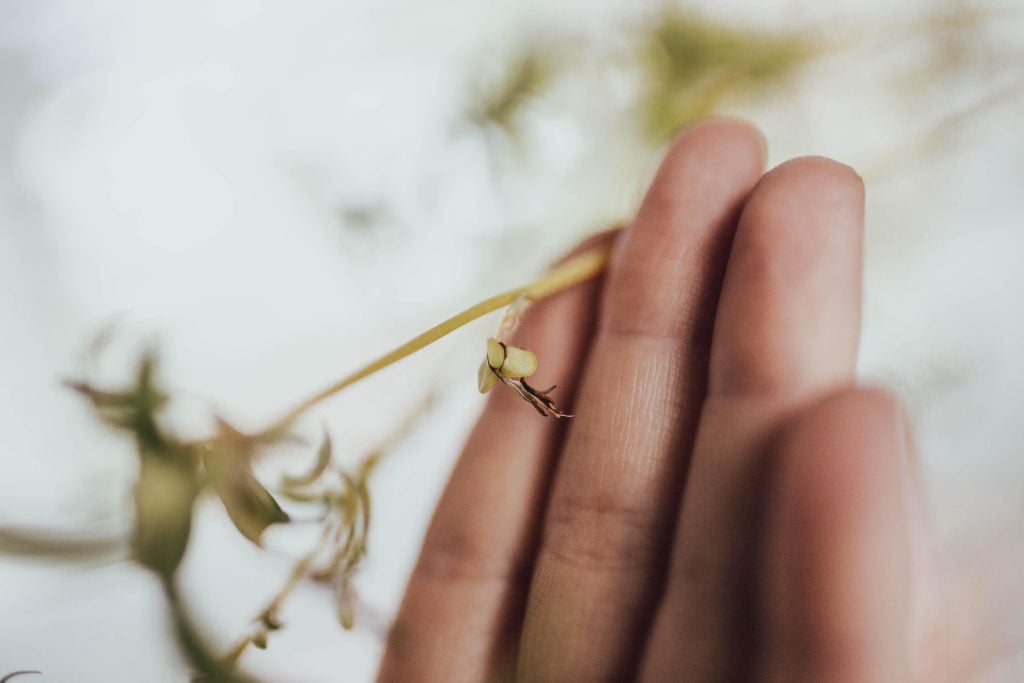
To produce fertile seeds, the spider plant can be cross-pollinated. You can do this by using a little brush or cotton piece to brush on individual blooms as they appear. Ensure that you brush all the flowers such that you enable pollen transmission to all the blossoms.
Then you notice the flowers fading. Now you can witness tiny green seeds and pods in their place. After these pods become dry, you can place them from the plant and break them open to gather the seeds inside the pods. It’s time to plant these seeds about 0.5 inches deep in a pot that contains potting mix. Till you see the seeds sprouting, keep the mix warm and moist. The fertility of the plant will be dependent on various factors.
Spider Plant Care Tips
1. Potting and Repotting Spider Plant
Another method to grow a new spider plant is by the process of potting its sapling in a pot or container.
Based on the size of the root ball of the sapling, take a pot that is about 1/3rd size larger than it. Ensure that the pot has holes for drainage in it, and use a loose potting mix for efficient results. Grow the spider for your house in these containers. Every couple of years, you must report the spider plant. You will know it’s time to repot them when you see the sprouts peeping out through the drainage holes.
You can conduct this process in the spring season as it is the best time to repot the plant. For repotting process, take a bigger container than the one you have used before. Gently remove the spider plant from the old one and transfer it to the new container. Use a fresh potting mix to fill the container. Here your repotted spider plant is ready to grow again.
2. Wintering Spider Plant Care in the UK
Winter is a difficult time for the plants as they have to face harsh winds and frosts for a couple of months. During this time, you can reduce the fertilizing schedule, and they naturally become semi-dormant. However, ensure regular watering of the plant as they need to be kept moist even on dry winter days.
3. Common Pests and Plant Diseases
Generally, spider plants usually have very few problems during their growth. But they are not completely resistant to common plant pests such as whiteflies, spider mites, or aphids. You can guess the impact of these pests by noticing depreciation in the foliage. The best and easiest way to eliminate the infestations on the plant is to rinse them with water. However, in case of serious infections, you can use natural remedies like neem oil.
How to Ensure Blooming of Spider Plant?
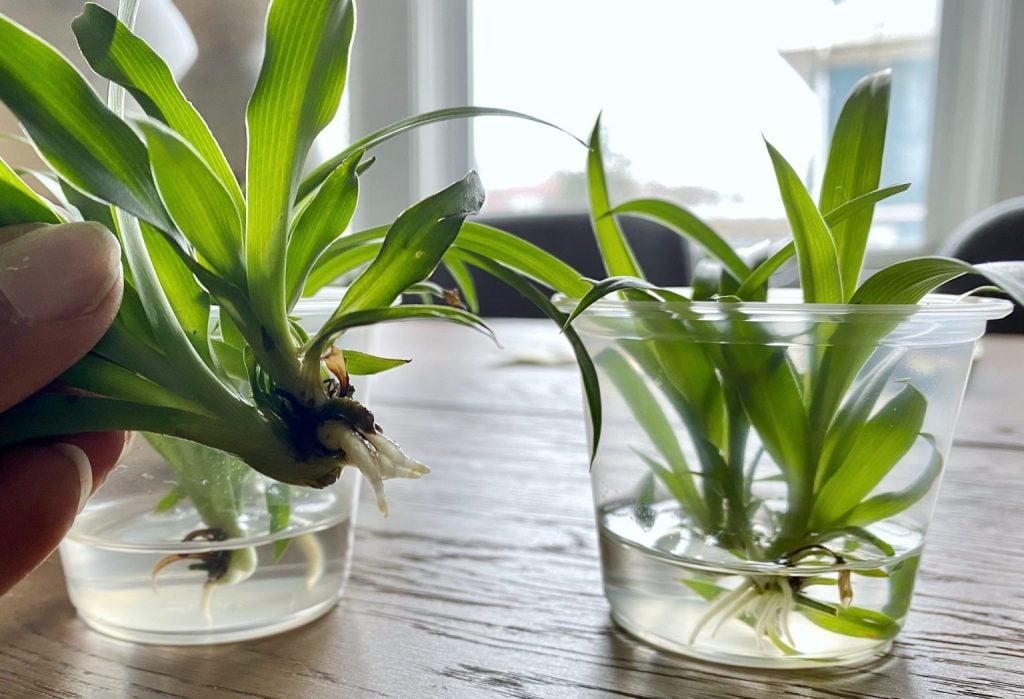
The spider plants produce white-colored flowers that are small and hideous. They do not gain instant attention, and one must be close to the plant to see them. Hence, no one can worry about the non-blooming of spider plants. However, if you want more flowers on your plant for any reason, you can give them more sunlight than usual.
To ensure proper sunlight, you must rotate the plant so that all sides of the spider get it. This will help you with flowers. Also, this will work more efficiently if the plant is root bound and not repotted. Also, if your end goal with the flower is to get more blooms, you may skip using fertilizers for better growth.
Problems with Spider Plant
As we have discussed above, the spider plant does not have many problems, but if they do, these are the common issues with them.
1. Plant Is Sparse
If at any time you see any plant struggling with growth, the normal way to tackle that problem is by watering more. But that must not be the case with spider plants. Instead, you must re-pot the plant in a bigger container and divide it if required. It is a plant that grows very fast and fills up the container just in a few months. Hence, if you see them with any issues, there is a high probability that it requires more space to spread their roots.
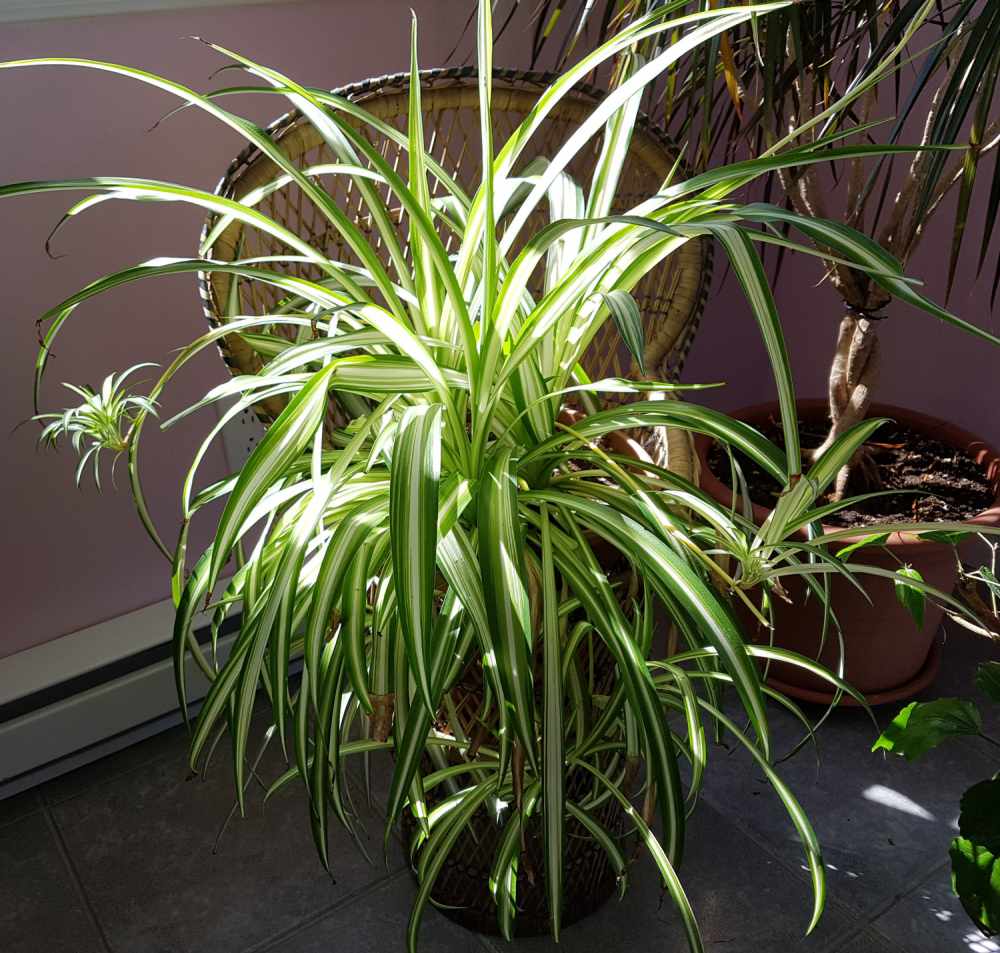
Apart from that, you can also cut away the baby parts of the plant. By doing this, you drive their energy into producing more shoots.
2. Tips Are Burned
Spider plants are usually sensitive to chemicals from different sources. If your tap water has some salts and chemicals, the plant will start showing burned tips. In such cases, to ensure spider plant care in the UK, you can water the plant with rainwater collected in bottles or untreated water.
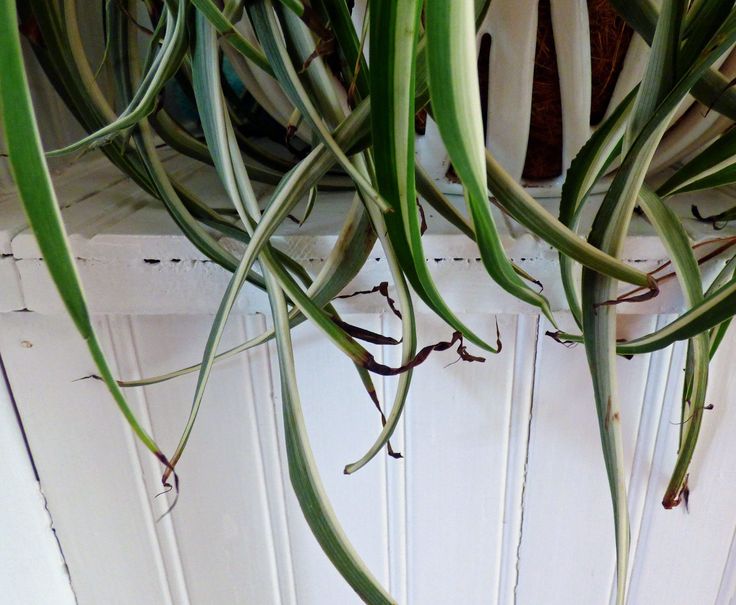
Also, if your plant is getting too much direct sunlight, its leaves start to become brown. So keep them in shady regions with indirect sunlight.
Methods of Spider Plant Care in the UK
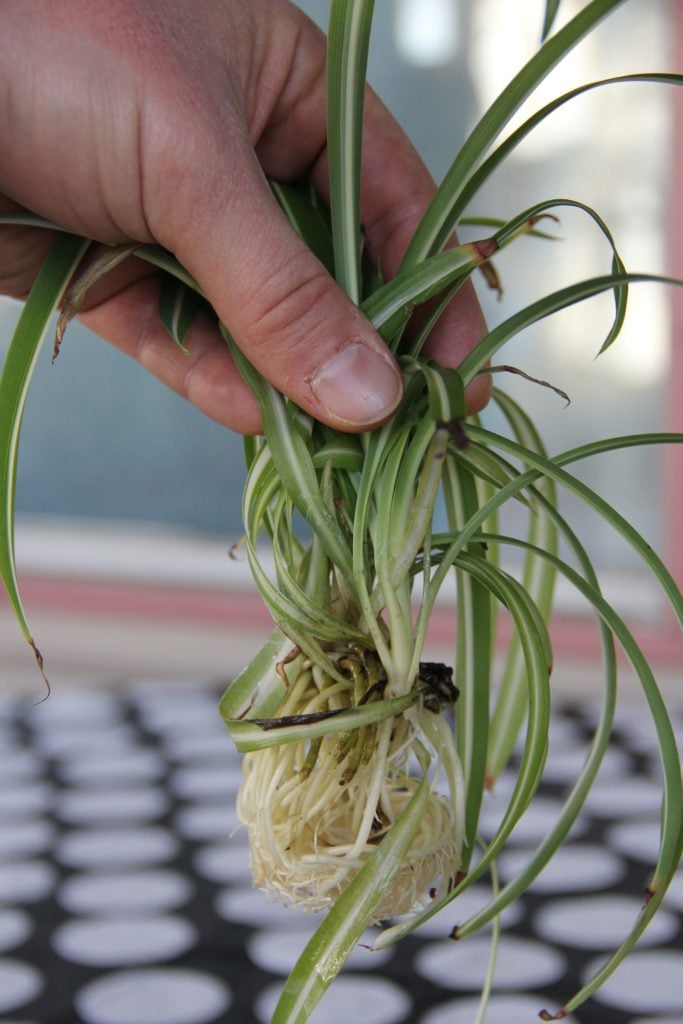
1. Plant Placement
Spider plant is usually kept in-house, i.e., in a closed environment.
Even in the house, it must be kept in a place that receives bright to moderate light. However, on days with high temperatures, you must keep them in partial shade that ensures a comfortable temperature. Further, as the plant cannot withstand consistent cold temperatures, you must keep them away from air-conditioning rooms in your house.
2. Soil Quality
Spider plant requires nutrient-rich soil with neutral conditions. However, it can withstand slightly acidic and slightly alkaline pH levels in the soil. Use soil of medium quality that can retain moisture on watering but also drain the excess water to avoid rotting the plant. However, if the soil has a high amount of salts, it can result in browning of the leaves.
3. Watering
You must keep the soil moist most of the time. You can water it one-two times a week during the summer and spring seasons. Also, allow the soil to dry in between the watering. These plants are sensitive to fluoride present in the tap water. So you must use untreated water for them.
4. Fertilizer
You can use fertilizer on your house plant every two-three weeks in moderate amounts, especially during the growing season of summer and spring. Ensure medium use of fertilizer. If you use too less, it can result in weak leaves, whereas too much of it can damage the leaves and make them brown. You can use an all-purpose fertilizer during the growing season based on the instructions given in the packet. Based on your plant’s growth, you can adjust the fertilizer amount based on your judgment.
Types of Spider Plants
There are several varieties of spider plants, and some of them are mentioned below.
1. Chlorophytum Comosum ‘Variegatum’
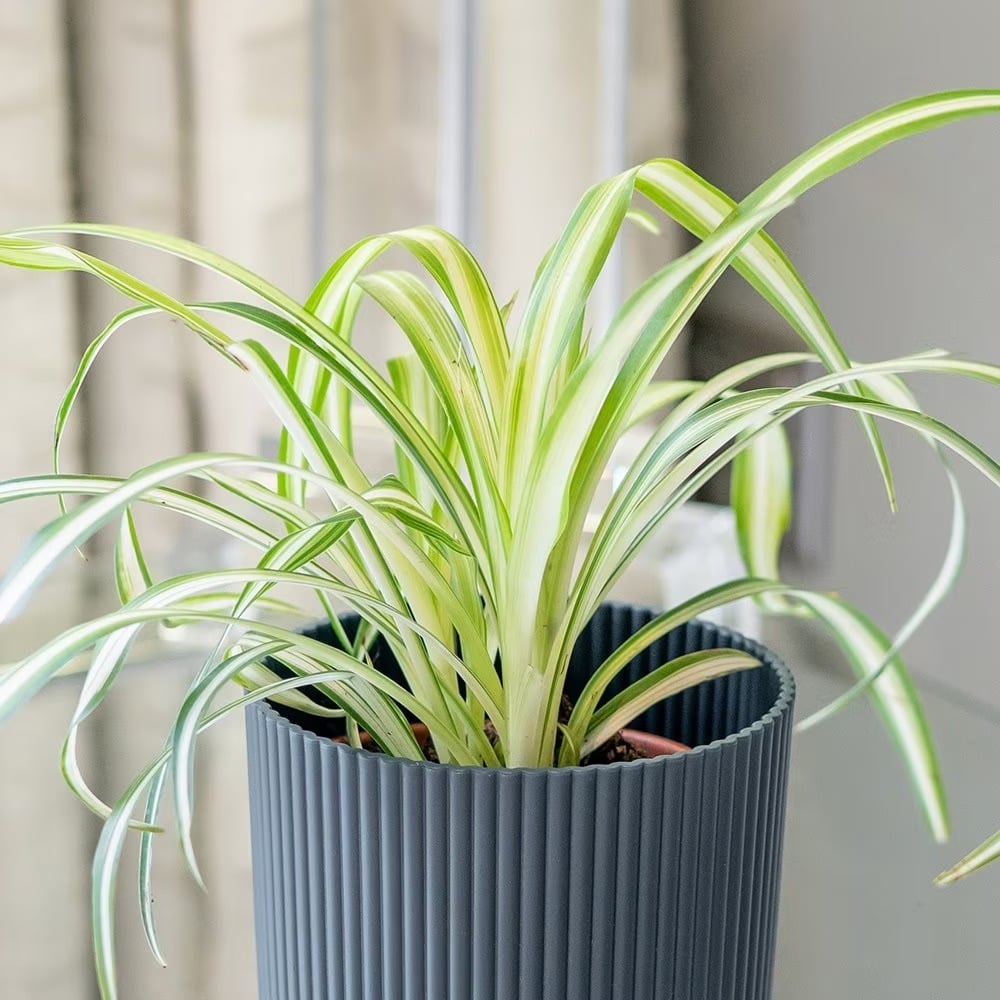
This variety has long and green stems with leaves in green and their margins in white or cream.
2. Chlorophytum Comosum ‘Vittatum’
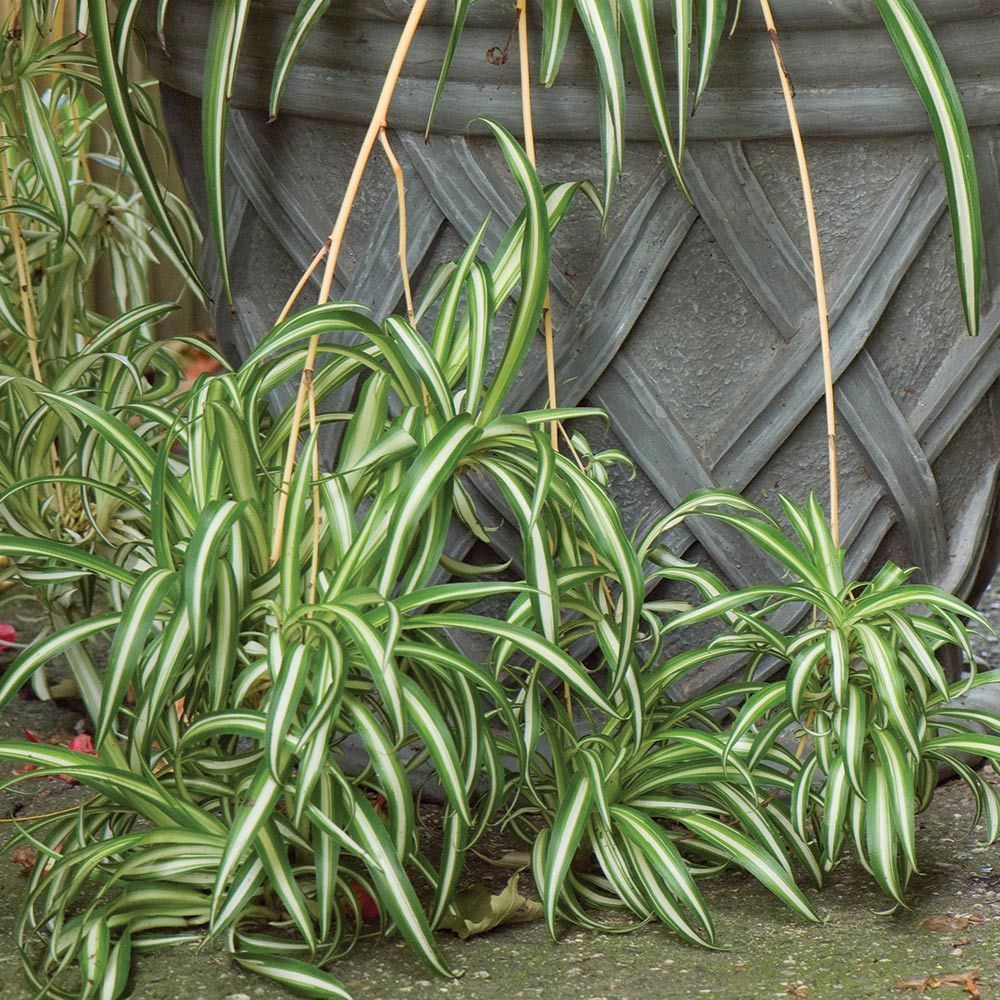
This variety has a white strip in the centre and is surrounded by margins in green colours. The stems of this plant are white.
3. Chlorophytum Comosum ‘Bonnie’
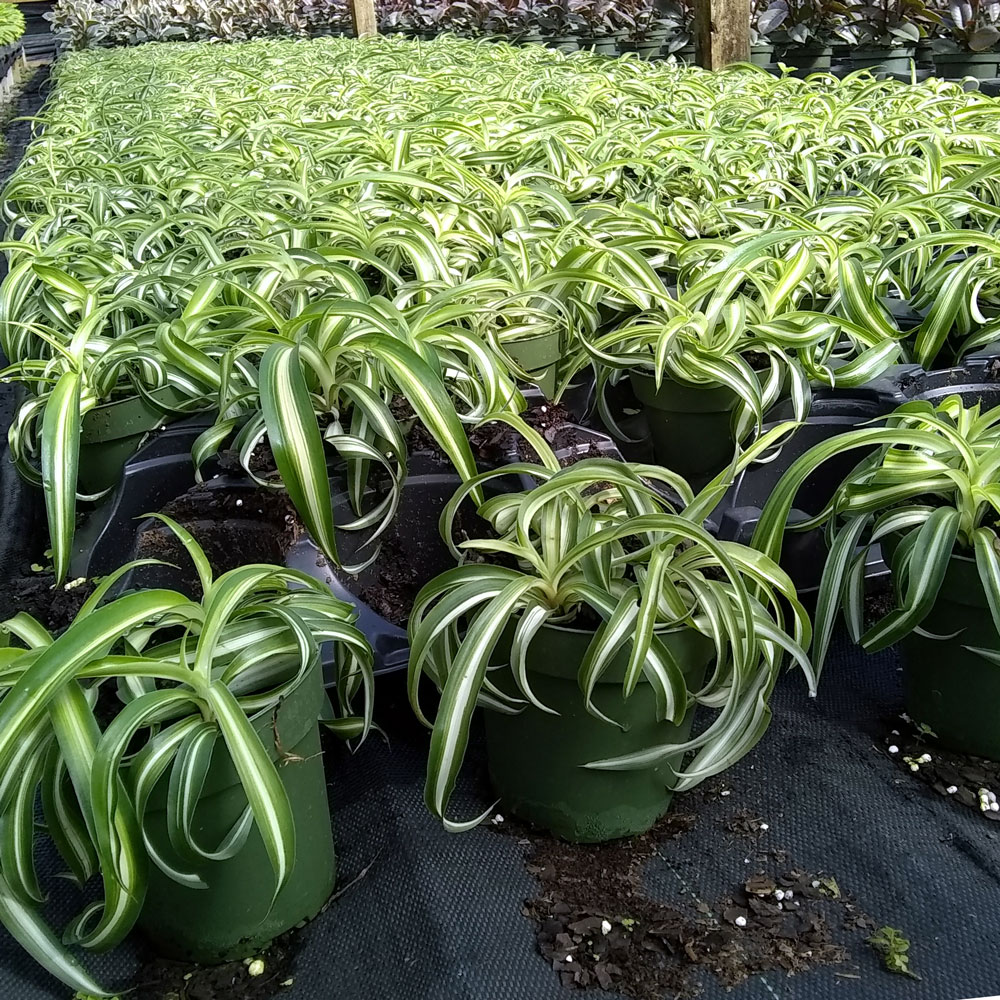
This variety of spider plants is more compact than others and has loosely curled leaves. It has green margins, and the centre is coloured cream. The plant has yellow flowers, small in size.
Pruning the Spider Plant
Spider plant requires pruning to make space for shoots that can divert their energy from producing more roots. It keeps the plant from growing and occupying all space in the container. You can prune the baby leaves of the plant if it is becoming too dense. Also, you can cut the brown tips to keep the plant fresh and alive.
Conclusion
The spider plant is an easy-to-grow houseplant that requires regular sunlight and water to grow.
The plant grows in all types of weather conditions in your house without much trouble.
There are different varieties of spider plants found in nature based on their shapes and the colour of the leaves.
The plant can help you to purify the air quality in your house and give a fresh vibe all the time.
It makes you feel calm and creative even on busy days. It enhances elegance in your house, irrespective of your interior.
Tell us about your experience with spider plant care in the comments section.

![Learn How to Grow and Care for Spider Plant [UK] How To Grow & Care For Spider Plants](https://www.thearches.co.uk/wp-content/uploads/How-To-Grow-Care-For-Spider-Plants-1024x683.jpeg)



